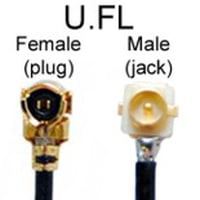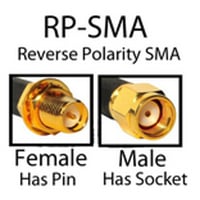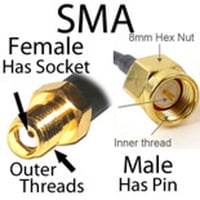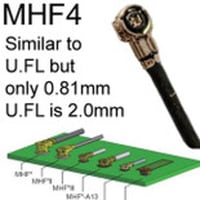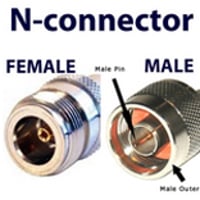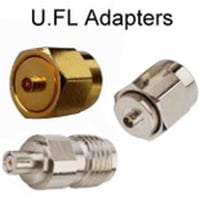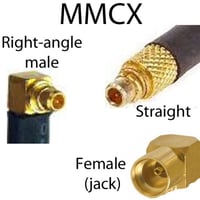U.FL to SMA-female Cable: 1-inch, 2-in, 3-in, 4-in, 5-in, 6-in, 8-in, 9-in, 10-inch
- SKU:
- Sf1iUFL113
- Availability:
- In stock
- Weight:
- 0.03 LBS
Data Alliance
U.FL to SMA-female Cables
Antenna Cable/Adapter. SMA female to U.FL. Cable length options:
- Choose among the length options above.
- Other length options: 12 inch, 14-inch, 16-inch, 18-inch, 20-inch & up to 41 inch versions
- We also have versions with SMA-female right angle connector, SMA male straight connector, and SMA-male right angle
- Data Alliance's high-quality soldered terminations of SMA and U.FL connectors provide a low-loss connection with discontinuities kept to a minimum.
Coaxial cable type options for our U.FL cables:
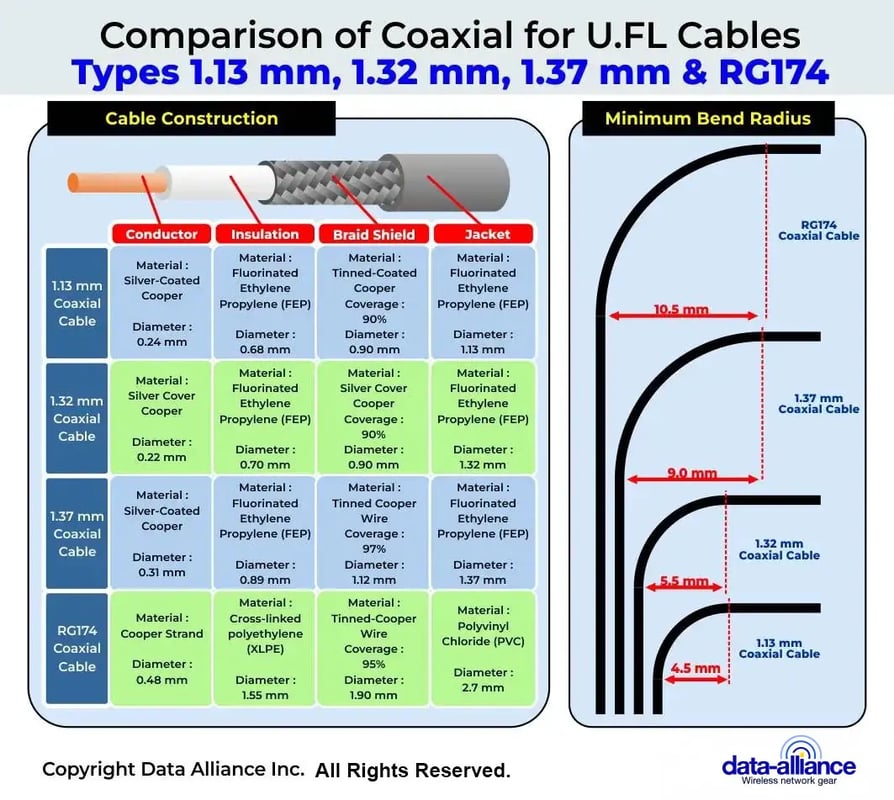
-
1.13mm mini-coaxial cable (impedance: 50 Ohms): This is a very thin and flexible cable with a black jacket. When connecting a UFL connector to a jack on a mini PCI card or board, the tight space often requires a 1.13mm cable because it is very thin and flexible (diameter is 1.13mm). This very thin cable is typically needed in tight spaces inside enclosures so that the U.FL connector will snap down on the jack without popping off.
-
RG-174 coax is thicker and has a lower signal loss (attenuation) than 1.13mm while flexible and easily bendable. RG174 is also better quality than 1.13mm and has a black jacket. The higher quality of this cable translates into lower loss and better performance. This cable is rated for outdoor use and is also suitable for indoor use. Note that the LMR-100 coax is too thick in diameter to use with U.FL connectors.
-
1.32mm coax is double-shielded and very thin (1.32mm diameter).
-
1.37mm coax is another low-loss option.
-
Special Orders: We can make special orders with 1.13mm, RG174, or 1.32mm coax if you want a lower-loss, thicker cable for the shorter versions of this cable. To request a particular order, contact us with your requirements.
SMA Female Connector Characteristics:
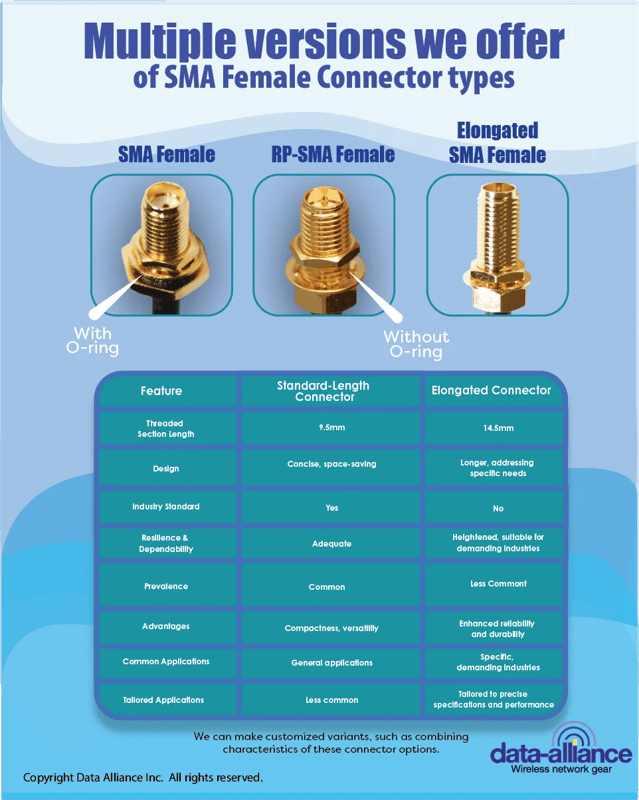
- SMA female connector includes a bulkhead nut and washer:
- This can be used to mount the connector (and thus the cable) on the wall of a network enclosure (to weatherproof the cable connection) or mount the connector on a case, panel, or Printed Circuit Board (PCB).
- Weatherproofing: Seal the hole where the female connector is mounted by placing an O-ring between the enclosure wall and the bulkhead nut & washer on the female connector.
- Our standard SMA-female connector (threaded part) is 3/8 inches long. We also offer a more extended option: 14.5mm. The longer option has an O-ring embedded in the flange to waterproof the port where the cable enters a network enclosure.
- SMA Features and Key Information. Dimensions, Materials composition.
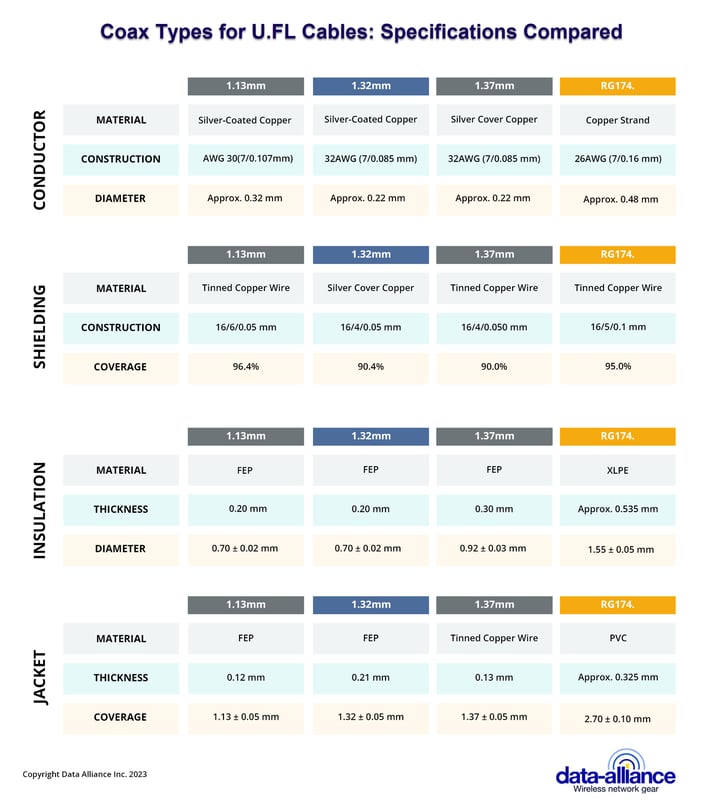
U.FL Connector Characteristics
Overview
U.FL connectors—also known as Ultra Miniature Coax Connectors (UMCC)—are compact, high-frequency connectors commonly used in IoT (Internet of Things) and M2M (Machine-to-Machine) wireless applications. Their small footprint and reliable performance make them ideal for densely packed circuit boards and miniature wireless modules.
Gender and Form Factor
U.FL Male Connector
The male U.FL connector, despite its gender designation, functions as the jack (receptacle) and is commonly integrated into devices such as:
- Bluetooth modules
- ZigBee radios (e.g., XBee)
- Printed Circuit Boards (PCBs)
- Internal mini-PCI wireless cards
Although it features a center pin (which technically classifies it as male), it serves as the fixed connector on the device, contrary to conventional RF connector gender assignments.
U.FL Female Connector
The female U.FL connector includes a socket and is typically attached to cables. It mates with the male jack on the device or PCB.
The right-angle female U.FL connector is the predominant configuration found on U.FL cables—used in approximately 95% of cable implementations due to its compact and flexible design.
Gender Identification Clarification
Gender conventions for U.FL connectors are often opposite those of traditional RF connectors:
- The jack on the board (male) is frequently mistaken as female due to its receptacle-like appearance.
- The female connector on the cable (with a socket) mates with the jack, despite appearing male by conventional standards.
Understanding this reversal is essential for correct mating and cable selection.
Tool-Assisted Handling
Because of their ultra-small size, connecting and disconnecting U.FL connectors requires care to avoid damaging delicate components.
To minimize the risk:
- Use a U.FL insertion/removal tool for safe and precise handling.
- This tool protects:
- U.FL cable ends
- Connector interfaces
- On-board jacks and solder pads
Using the proper tool significantly reduces wear and mechanical stress, extending the lifespan of the connector and device.
Construction and Electrical Performance
U.FL connectors are manufactured from precision-machined, gold-plated brass, offering:
- Excellent durability and corrosion resistance
- Low signal loss for high-frequency RF transmission
- Reliable performance in compact, embedded environments
The U.FL female connector is designed to mate with HiRose U.FL-LP-66 jacks, ensuring secure and efficient signal connections for embedded wireless solutions.

U.FL Connectors' Material composition
- Male has a silver-plated phosphor bronze made the shell and a gold-plated brass made contact.
- Female: Female U.FL connectors' shell and contact are made of phosphor bronze but are silver and gold-plated, respectively. They are used to terminate antenna cables.
- U.FL connectors are precision machined. The gold-plating enables low signal loss.
Compatibility with wireless standards and applications:
Engineered for versatility, our our UFL to SMA "pigtail" cables cover a full frequency range of 0GHz to 18GHz, maintain low broadband VSWR, and ensure 50 Ohm impedance matching—supporting a wide array of wireless applications. These include WiFi systems at 2.4GHz and 8GHz, like Wi-Fi HaLow 802.11AH, 802.11AX, 802.11AC, 802.11N, 802.11G, 802.11B, and 802.11A. They also accommodate cellular standards such as LTE / 4G, GSM / 3G, and WiMax for both data and voice communication. Perfect for IoT and M2M integrations, these cables handle Bluetooth, ZigBee, WiFi HaLow, RFID, LoRa, LTE-m, and NB-IoT, WiFi 6, WiFi 6E.
.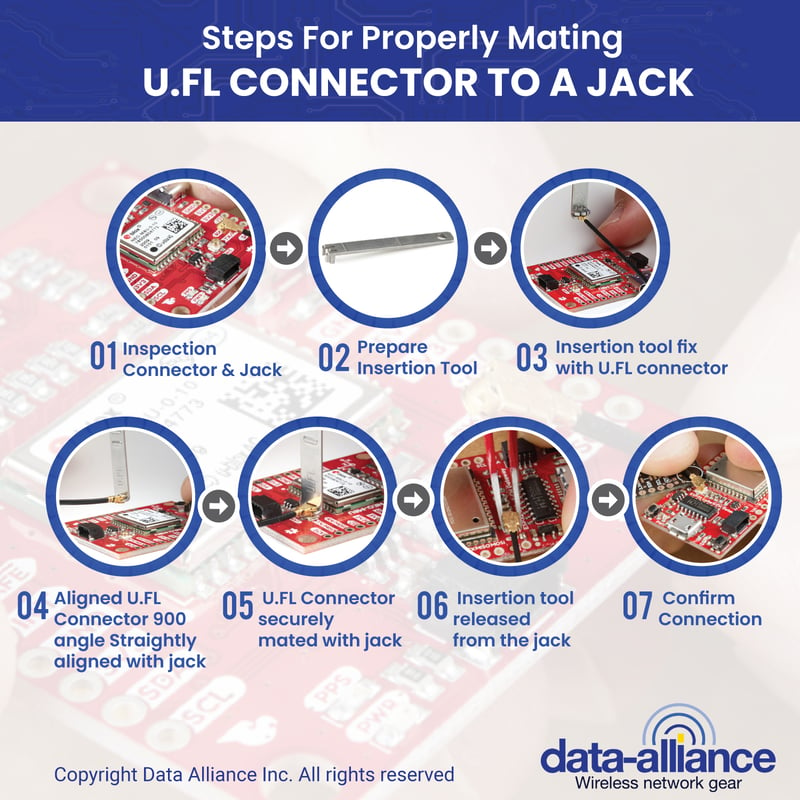
RoHS 3 and REACH compliant: We understand the importance of safety and environmental responsibility in your applications. That's why all of our antenna cables and RF adapters, including the U.FL to SMA-female Cable, comply with the content of heavy metals and other toxic materials that are restricted by RoHS 3 and REACH, giving you peace of mind about the safety and environmental friendliness of our products.
RELATED PRODUCTS:

